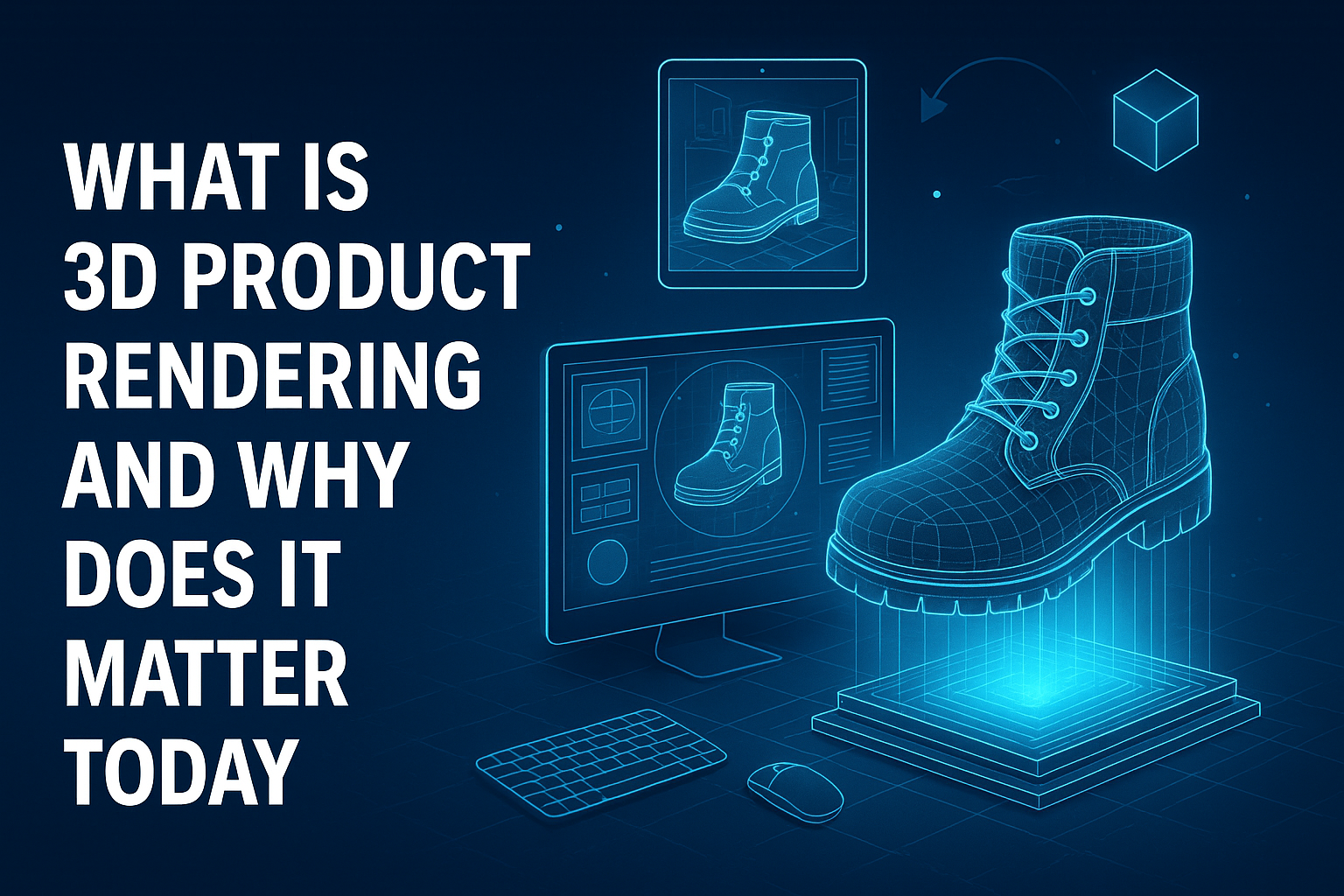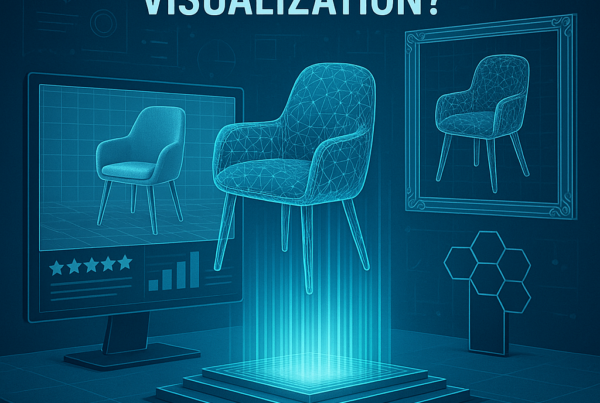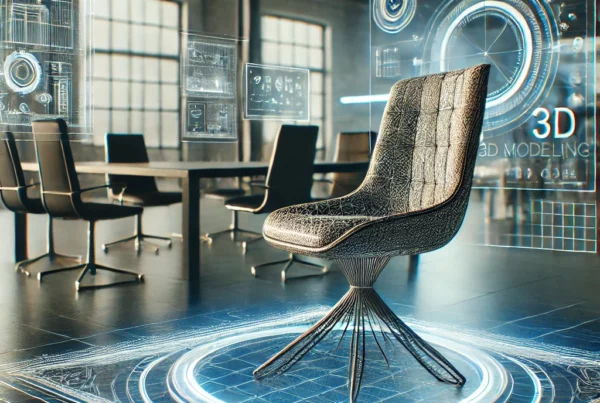3D product rendering has emerged as a cornerstone of modern commerce strategy. By replacing traditional photography with hyper-realistic, computer-generated visuals, it empowers brands to showcase products with dynamic lighting, infinite variations, and 360° interaction—without ever staging a shoot. As consumer expectations surge and competition tightens, this technology isn’t just innovative—it’s essential. From reducing return rates through AR-enhanced previews to streamlining content creation with scalable renders, 3D visualization directly boosts conversions and engagement. For both e-commerce retailers and B2B suppliers, the shift to 3D is no longer optional but strategic. Yet with a growing field of providers offering varied pricing models, render types, and integration features, choosing the right partner is crucial. Businesses must weigh visual quality, tech compatibility, and platform flexibility to ensure long-term value. This guide breaks down what matters most when selecting a 3D rendering provider—because in a visual economy, your digital product presence defines your brand.
What is 3D Product Rendering and Why Does it Matter Today
3D product rendering is revolutionizing the way businesses promote their products in the digital era. On its most fundamental level, the technology employs computer-generated images (CGI) to generate realistic and personalized visuals of products without depending upon photography. This allows a company to display its entire product list in 360° with dynamic lighting effects, colour variations and rich details – without having to undertake a single photoshoot.
With e-commerce reigning supreme and customer expectations hitting the sky-high stratosphere, static product images simply do not suffice any longer. Consumers today yearn to investigate, zoom in and even imagine products in their own space. This is where the gap in imagination is filled with interactive 3D and augmented reality (AR). Tools such as Mazing utilize 3D rendering and AR technology to allow buyers to engage with products with confidence and enhance purchase decisions in the end.
The move away from flat graphics isn’t style—it’s about function. 3D graphics are proven to enhance dwell time, drive conversions, and decrease returns. Companies that adopt the method stand out with rich customer experiences that look and feel contemporary, reliable, and intuitive.
For both e-commerce and B2B businesses, adopting 3D visualization is not a consideration of the future—it is a necessity of today. With costs declining and accessibility on the rise from the use of tools such as AI-generated renders, 3D rendering is now a mainstay of digital success rather than a luxury add-on.
Test MAZING 2D to 3D AI Tool Today!
Advantages of 3D Product Rendering for E-Commerce and B2B Companies
For e-commerce and B2B brands, 3D product rendering is so much more than aesthetics—it’s a business driver with tangible ROI results. One of the greatest advantages is user engagement. By being able to interact with and examine a product from all sides or experience it in AR, users spend longer on site, click more often, and are more confident in their purchase decisions.
We have indetified three clear advantages:
- Reduced product return rates. Much of what is sent back is the result of misaligned expectations. With interactive 3D and the possibility of seeing things in context—such as previewing products in the room where you plan to put them with AR viewers—shoppers gain perspective. This perspective leads to happier buyers and reduced logistics costs for retailers.
- Scalability is also a game-changer. Rather than having to plan costly photoshoots each time you introduce a new variant, brands can create unlimited product images—colors, angles, and backgrounds—through a single 3D model. On platforms such as Mazing, even life-style and silo renderings can be automated and tailored to be used for social media, promotions, and product information pages without having to begin from zero.
- Personalization and digital clarity creates stronger retailer relationships. By supplying 3D visuals, wholesalers give partners the power to include them in their own web stores or showrooms to increase the perceived value of the overall supply chain. In essence, 3D rendering turns digital content into a sales engine.
3D Rendering in comparison to Traditional Photography: Cost, Versatility & Effect
Let’s be honest: traditional product photography is costly, time-consuming, and rapidly out of step with current digital expectations. Scheduling studios, handling logistics, and arranging post-production around each product variant burns budget and manages time to market. By contrast, AI 3D rendering is disrupting the game—providing brands with unparalleled efficiency and flexibility at a fraction of the budget.
Consider numbers, for instance. You can shoot silo images from multiple angles starting at €0.10 per image—while paying hundreds for one photoshoot setup. Do you need lifestyle photos? Sixteen AI-created 3D images begin at €10, with hand-drawn renderings for high-profile campaigns remaining competitive at €350. That’s up to 80% less than traditional photography.
But it is not merely financial. 3D rendering frees you up to be creative. You want to see your product in five environments, three lighting effects, and two seasons? No problem at all. Shooting with traditional photography would involve reshooting or enormous retouching—rendering does it instantly and infinitely scalable instead.
Speed is also a game-breaker. Rather than waiting weeks to receive edited images, images can be generated and updated with algorithms in days and even hours. This fast delivery is important in rapidly paced markets, in product launch announcements, and in A/B tests.
Finally, AI 3D rendering doesn’t only rival photography—it reinvents what is achievable in product visualization. For agile brands that need to be budget-friendly and eye-catching, it’s the obvious winner.
Top Use Cases: From AR Experiences to High-Converting Product Pages
3D product rendering is not a catch-all phrase—it is creating tangible outcomes in multiple touchpoints in the digital space. One of the standout use cases is in AR applications. By merging 3D models with augmented reality, brands enable users to virtually “try on” shades of sunglasses, imagine furniture in their living space, or even try out wall decor on the walls of their living room. These immersive try-ons can be rolled out in mere clicks with Mazing’s Web AR application.
A second use case? Social media lifestyle renderings. In lieu of costly shoots, brands can generate photorealistic scenes that align with seasonal trends and themes, or audience segments—at least all from one product model. This facilitates fast and endless creative variation, particularly with the power of AI-generated images behind it.
Online stores come to life with 3D renders and interactive viewers. Product pages with 3D/AR experiences have been shown to deliver up to +45% conversion rates and also cut bounce substantially. Through the use of Mazing’s config tools, users can interactively discover colour variants, attributes, and dimensions and achieve higher engagement and faster decisions.
B2B brands are taking these same technologies and applying them in creative forms—such as digitizing showrooms or empowering resellers to integrate custom viewers onto their websites. This doesn’t only streamline operations—it elevates the brand itself to be seen and perceived as cutting edge and cooperative.
Briefly, 3D rendering drives more than simply stunning visuals—it creates experiences that convert, convince, and connect.
Step-by-Step Guide: How to Convert a 2D Image into a 3D Model with AI
There has never been an easier time to convert a 2D image into a 3D model, with AI tools on the job. No matter which one you choose, Mazing, Meshy AI, or Sloyd AI, the process is easy yet effective. The following is a step-by-step guide to get started:
Step 1: Choose the Right AI 3D Model Generator
The ideal tool for AI 3D model design will depend on your needs. Mazing is ideal for online stores and businesses due to its frictionless 3D commerce integration. If you would prefer more control over the design, then Sloyd AI comes with parametric modeling and is suitable for game items and digital assets.
Step 2: Upload a 2D Image or Multiple Angles
Once you have chosen your tool, upload a 2D image of the object that you want to transform. Some platforms allow several images from different angles, making it more accurate. AI scans the depth, texture, and structure of the image to recreate a 3D model.
Step 3: AI Processing and Model Generation
The AI system will take a few seconds to a minute to process the image and create a 3D model. Advanced software like MAZING AI uses machine learning-based algorithms to predict missing data, delivering an improved and high-quality result.
Step 4: Enhance the Model with Designers
If you require hyper-realistic 3D images, you can utilize Mazing’s AI model enhancement process to improve textures and meshes. As AI is not perfect, this step is recommended if you want to use the models for e.g. product configurators.
Step 5: Adjustments & Export the 3D Model
Export in a format like STL, OBJ, or glTF, depending on what you’re going to use it for—3D printing, gaming, or augmented reality applications.
Key Features to Consider When Choosing a 3D Product Rendering Service
Selecting the right 3D product renderer isn’t just about style—it’s about having a partner that can cover your entire digital pipeline. Here is what you need to look for:
- Seamless integration. You’re doing Shopify, WooCommerce, or a custom setup? Your renderer should come with a plug-and-play setup. For instance, with Mazing you can integrate 3D/AR viewers on your site with a simple copy-paste code snippet and take the tech headaches out of the equation.
- Security is also important. You’ll want anti-theft 3D security if you’re investing in premium 3D assets to avoid unauthorized use. Providers should include encrypted hosting and access to content controls if you plan to use assets multiple times in marketplaces such as Amazon, OTTO, or Google.
- Don’t miss digital asset management (DAM) systems. These systems house your 3D visuals and store them by SKU or campaign and grant teams, partners, or resellers access to them. Add to that in-built analytics and you can monitor performance indicators such as viewer interactions, add-to-cart actions, or time spent viewing 3D models—vital information to refine your strategy.
- Finally, think about flexibility. Ideal suppliers cater to both AI-authored and hand-drawn illustrations, so you can be flexible based on your objective. You’re rolling out a quick campaign or creating images for upscale print, your supplier should be flexible and not vice versa.
Such attributes exceed glitzy graphics—they lie at the core of scalable, clever digital commerce.
Handmade vs AI-Generated Renders: which should you use?
With 3D product rendering, there is not one-size-fits-all approach. Your aim, deadline, and required level of visual fidelity determine whether to use AI-generated or hand-crafted renderings. Each has its own strengths—and knowing which to use when can save you time and enhance your brand image.
- AI-generated images are perfect for speed and scale. Require hundreds of product variations to use in your web store, social media, and retargeted advertising? Input a product image and a text prompt and the AI takes over. It’s quick, cost-effective (from €10 with suppliers such as Mazing), and great for e-commerce teams who want to publish content at scale without compromising too much on quality.
- Handmade renderings, by contrast, excel where perfection is required. Consider high-end catalogs, print advertisements, or premium products where texture and shadow cannot be anything less than perfect. These images are created by skilled 3D artists who can translate a brand’s personality and style into custom scenes. Yes, they cost more—beginning at around €350—but the payoff is exceptional realism and storytelling of the brand.
Brands blend both methods together: speed via AI and handcrafted visuals for heroes. This model is both agile and maintains consistency. Ultimately, the correct selection is a matter of use case and aspirations. Are you optimizing for reach or refinement? For most businesses, the perfect middle ground is having them both at your disposal.
How Much Should You Expect to Pay for 3D Rendering Services?
If you’ve ever asked yourself, “How much does 3D rendering cost?”, you’re in good company. Pricing can be astronomical and vary widely depending on use case, volume, and type of rendering—but thankfully, with standardized platforms like Mazing on board, it’s getting more transparent and predictable by the day.
Let’s dissect that. For simple e-commerce purposes, the silo images (product-only photos with blank backgrounds) are usually charged per photo. In the case of Mazing, these begin at a mere €0.10 per render, which is among the most scalable available to use in catalog or marketplace photos.
Something more refined is required in social promotions? AI lifestyle depictions, which utilize input prompts and product images to create photorealistic scenes, begin at approximately €10 per image. Ideal for digital media that requires rapid, current, and frequent material,
At the higher end of the scale are the hand-drawn renderings that cost around €350 and need a comprehensive brief and 3D model. These are more ideal for flagship images, magazine advertising, and high-end campaigns where visual storytelling is not negotiable.
Some vendors bill by 3D model, with costs from €80–€200 depending on complexity. Other vendors use subscription-based licensing that includes rendering, AR viewers, DAM tools and analytics in the package.
Bottom line? There is a rendering solution to fit any budget. It is simply a matter of aligning investment with business objective—whether scale, speed, or premium brand presentation.
Assessing a Provider’s Portfolio and Technical Capabilities
Before engaging with a 3D product rendering partner, you need to look beyond pricing and promises. Where to begin? Their portfolio. Their portfolio should reflect versatility in industries, light styles, and rendering sizes—from solo product photos to full immersive lifestyle scenes. Clean textures and realistic shadows and accurate product representation should be evident. If it doesn’t look right to you—proportion, color balance, light—it won’t look right to your customer either.
Then check the quality and accuracy of their 3D model. Are dimensions and details accurately captured? Inadequate modeling degrades the entire rendering process, particularly where assets get reused in AR experiences, product pages, and configurators. Platforms such as Mazing employ manual QA controls and AI to guarantee that the models not only accurately represented but also reusable in multiple touch points, such as Amazon or OTTO implementations. Don’t do without tech shopping attributes. Offer interactive elements such as 3D/AR viewers, web configurators, and tracking sophistication.
These bells and whistles that convert static images to performance engines. For example, viewer analytics from Mazing reveal users’ dwell time, what they turn and what and where they bail—intelligence that cycles back to smarter UX and product improvement.
Lastly, think about ecosystem compatibility. Do the 3D assets work with your digital asset management (DAM) system, marketing stack, and e-commerce store? You’ll want flexibility if you’re doing multi-channel distribution. Briefly put, good rendering is only half the story—it is all about smart infrastructure and long-term usability.
Test MAZING 2D to 3D AI Tool for Free






